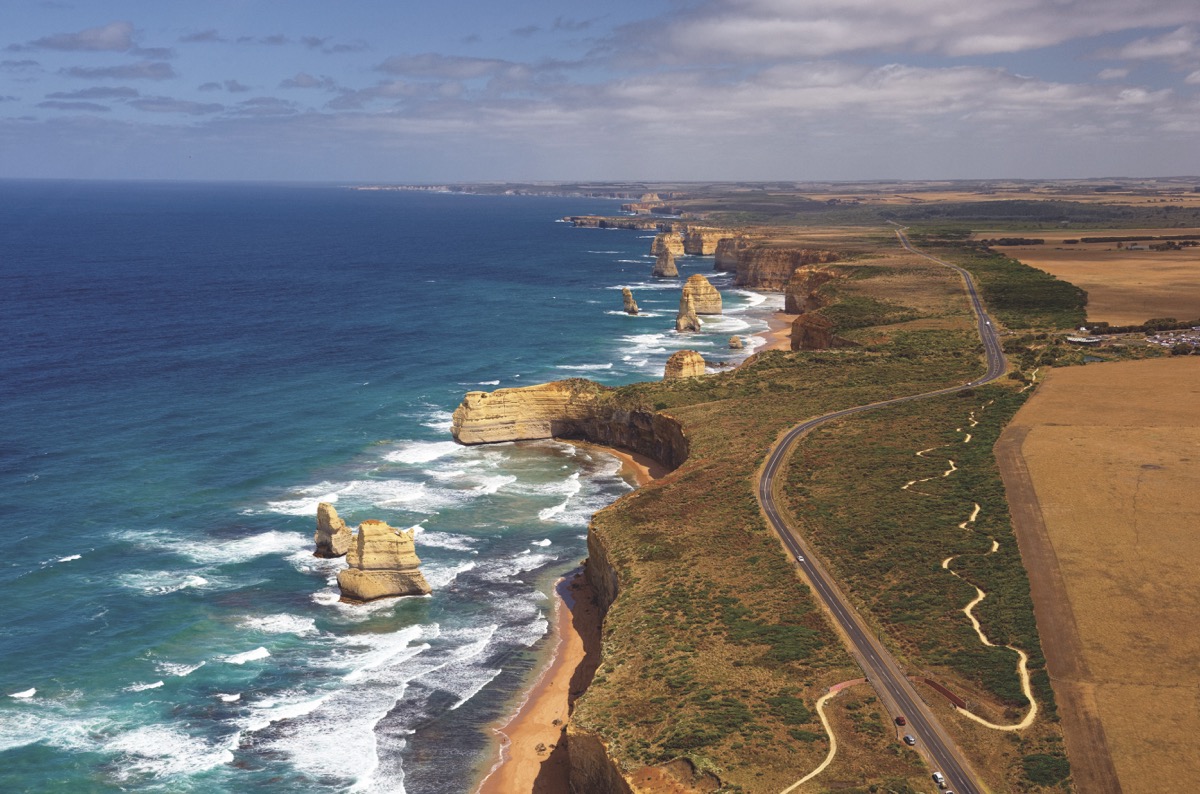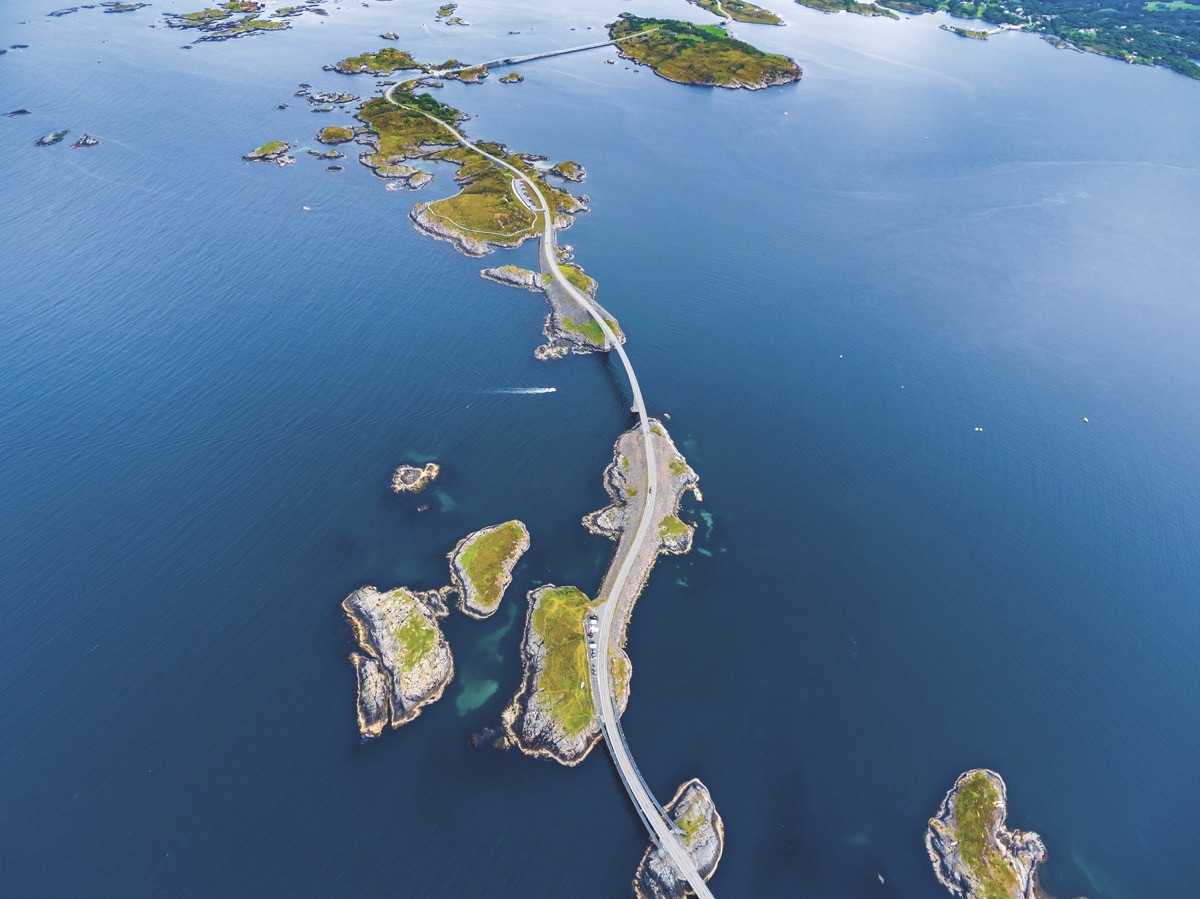Venturing into a trip to discover wild routes, going on the open road, is a human urge that fills novels and films. Not even the advent of low-cost air travel, or the ease of moving from one point on the globe to the other , have diminished that love of visiting remote monuments or landscapes or mythical routes like route 66. There are many lists of places one should visit before dying as, for example, travel by the best european routes; of the best natural parks for getting lost in or the beaches for spending part or all of a summer. And there are spaces that never change. Legendary journeys that are still part of our collective desire.
There’s almost one routes by car for each taste. Some people prefer wide, uncluttered horizons and others dream with wild routes of winding up a mountain. For the latter, there are places like the 90 kilometres of curves in the Transfagarasan, in Romania. There is also to Herminda Pass in the Cantabria region of northern Spain, the Furka Pass in Switzerland, or the Route Napoleonic in France, are one of the best european routes. Other essential roads: the Atlanterhavsveien in Norway, Ruta 40 in Argentina, or the most famous: Route 66, which crosses America.

The Great Ocean Road: it covers 243 kilometres in southern Australia, along the Pacific coast from Greelong to Portland, with marvellous rock formations and all kinds of beaches, it is definitely one of the best routes that exists
To come to know some more about the best routes by carof them more closely, we’ve consulted Paco Nadal. A journalist and compulsive globetrotter, this expert traveller says Route 66 is obligatory, as a reflection of our culture. “It is so emblematic of literature and music that it’s worth travelling leisurely,” says Nadal, who hasn’t done so completely but in parts. “You quickly get right into some very varied and little known parts of America,” he adds.
The route 66 it has Its almost 4,000 kilometres, from Chicago to Los Angeles, go through states like Missouri, Kansas and Arizona. And without too many road signs. “Everyone expects it to be like the pilgrim’s Road to Santiago, but in fact there are only a few of the original stretches remaining,” says Nadal, the author of Pedro Páramo ya no vive aquí (RBA, 2010). He recommends travelling slowly, with an idea of what you’re looking for but open to improvisation. “It’s a good idea to prepare beforehand, with guidebooks and novels, but not with an Excel spreadsheet,” adds this traveller who knows what it’s like to just wander leisurely without a return ticket.
Neither should anyone be in a hurry while driving along the first-mentioned route, the Transfagarasan, one of the best routes in Europe, located in the Carpathians. Sometimes because it can be snowed in or because it’s worth making a stop at Poenari Castle, said to be the residence of Vlad the Impaler, the prince who inspired Dracula, by Bram Stoker.
“It’s a good idea to prepare beforehand, with guidebooks and novels, but not with an Excel spreadsheet,” says Paco Nadal about Route 66

Among those other drives, the Route Napoleonic covers the 325 kilometres that the emperor travelled from Antibes, the port he came to after his exile on the island of Elba, to Grenoble. Mention should also be made of the near-unpronounceable Atlanterhavsveien, in Norway, a true wild route, which links a number of small islands in just 8.72 kilometres: according to its creators it is “a perfect combination of nature and engineering.” Or, in the antipodes, the Great Ocean Road: it covers 243 kilometres in southern Australia, along the Pacific coast from Greelong to Portland, with marvellous rock formations and all kinds of beaches.
And the list must include the Romantische Strasse in Germany –with the name of a street because, in spite of its 410 kilometres, you have the impression of traversing an avenue– or Route 40 in Argentina, a 5,200-kilometre (1.00 more than the route 66) stretch between Cabo Vírgenes, in the south, to the border with Bolivia. It’s one of the highest roads in the world, and to give an idea of its dimensions, it traverses 21 natural parks, 18 rivers and some of the most solitary country in the world, as is only proper for the immensity of Patagonia.
Before setting off to new roads it’s a good idea to take some precautions. “Improvisation is not a good guide,” says Juan Andrino, an engineer with the Spanish General Directorate of Traffic
But all these examples, from the route 66 to the wildest road, –as pointed out by Juan Andrino, an engineer with the Spanish General Directorate of Traffic– merit some caution before setting off. “Improvisation is not a good guide,” says this professional as he enumerates some basic requirements: make sure the vehicle is in good condition and the driver in an equally reliable shape, draw up an itinerary and the hours to be spent driving, and make sure the passengers and their baggage are correctly placed.
Text: Alberto García